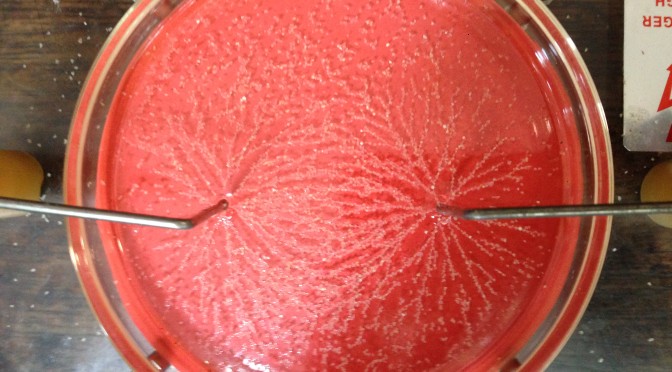- I hope that most school children get to see that sprinkling iron filings around a bar magnet produces a pattern which shows the shape of the magnetic field around the magnet. It’s a very simple, yet useful, way of making something invisible, visible. What many school children won’t get to see is that you can do something very similar with electric fields, using semolina instead of iron filings. The picture above is from a demonstration I showed my year 13 (A-level) students last week – the instructions for how to set it up can be found at the Practical Physics site.
A tip: it’s lovely for the students to see this for themselves, but the apparatus is tiny so use a camera to project it onto your whiteboard as well. I forgot to take my webcam into school so I used my phone to take a photo and put that up on the whiteboard so we could look at the demonstration closely and discuss it. I encouraged my students to take photos too, as I did when we investigated magnetic fields – I’m not convinced getting students to draw what they see is terribly useful in this case. What do you think?


